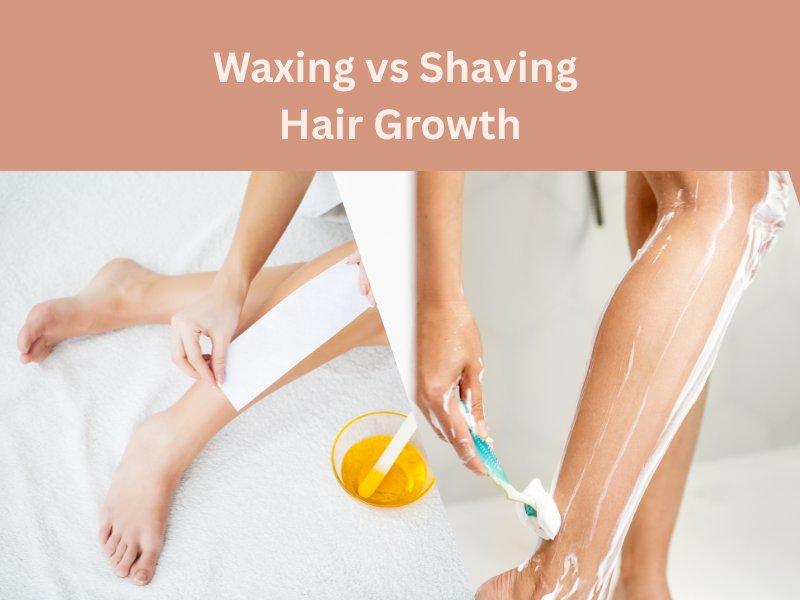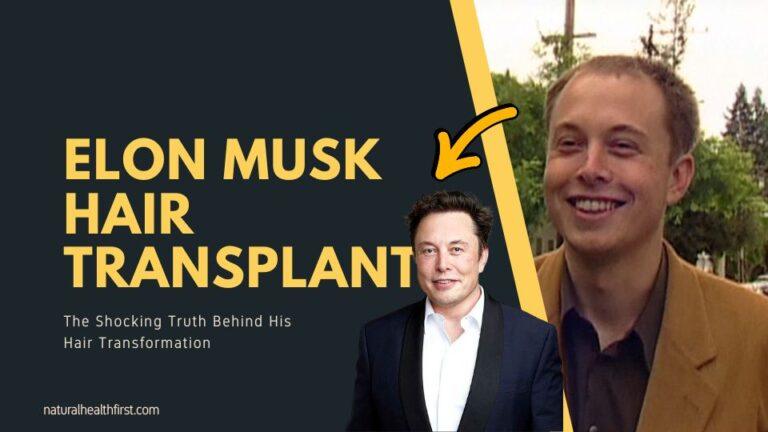As a hair specialist with over fifteen years of experience helping clients navigate their hair removal journeys, I encounter this question almost daily: “Will waxing prevent hair growth permanently?” The short answer is no—waxing will not permanently prevent hair growth. However, the complete picture is far more nuanced and encouraging than this simple response suggests.
Understanding how waxing affects your hair growth patterns, texture, and regrowth speed is crucial for setting realistic expectations and making informed decisions about your hair removal routine. Many clients come to me frustrated by conflicting information they’ve found online, and I’ve dedicated my career to providing evidence-based, practical guidance that helps people achieve their hair removal goals.
Let me walk you through everything you need to know about waxing’s effects on hair growth, based on both scientific research and my extensive hands-on experience with thousands of clients over the years.
Also Read: Elon Musk Hair Transplant: The Shocking Truth Behind His Hair Transformation
About Hair Growth Cycle and Waxing
Waxing hair growth cycle interaction forms the foundation of understanding what waxing can and cannot achieve. Hair grows in three distinct phases, and waxing’s effectiveness depends heavily on which phase your hair is in during treatment.
The Three Phases of Hair Growth
Anagen Phase (Growth Phase) This active growth phase lasts 2-6 years for scalp hair but only 4-6 weeks for body hair. During anagen, hair follicles are deeply rooted and actively producing new hair cells. Waxing during this phase removes the entire hair shaft from the root, which is why you experience the longest-lasting results.
Catagen Phase (Transition Phase) Lasting 2-3 weeks, this transitional phase sees the hair follicle shrink and detach from its blood supply. Hair removed during catagen may not regrow as quickly, but the follicle remains capable of producing new hair.
Telogen Phase (Resting Phase) During this 2-3 month dormant period, old hair rests while new hair begins forming beneath it. Waxing during telogen removes dead hair that would naturally shed soon, explaining why some areas seem to regrow faster than others.
How Waxing Interacts with Growth Cycles
Effects of waxing on hair growth vary significantly based on timing within these cycles. Only 10-15% of your body hair is in the anagen phase at any given time, which means multiple waxing sessions are necessary to catch all follicles during their active growth period.
Synchronized growth patterns develop over time with regular waxing. Initially, your hair grows back in patches because follicles are in different phases. After 3-4 consistent waxing sessions, more follicles synchronize into similar growth phases, leading to more even regrowth and longer-lasting results.
Does Waxing Prevent Hair Growth? The Scientific Evidence
Does waxing slow hair growth? Research shows that regular waxing does indeed slow hair regrowth, though the mechanisms are more complex than many people realize.
Documented Effects on Growth Speed
Clinical studies have demonstrated measurable changes in hair regrowth patterns with consistent waxing:
- Hair regrowth slows by 15-30% after 6 months of regular waxing
- The diameter of individual hair strands decreases by 10-25% over time
- Regrowth cycles extend from 4-6 weeks initially to 6-8 weeks with regular maintenance
- Some follicles enter extended dormant periods, appearing to “stop” growing temporarily
Biological Mechanisms Behind Slower Growth
Follicle trauma from repeated waxing creates microscopic changes in hair follicle structure. While not permanent damage, this trauma can weaken the follicle’s ability to produce robust hair quickly.
Blood supply reduction occurs around repeatedly waxed follicles. The minor trauma from waxing can slightly reduce blood flow to follicles, slowing the nutrient supply necessary for rapid hair production.
Stem cell depletion in follicles happens gradually with repeated aggressive removal. Hair follicles contain stem cells that regenerate hair, and frequent trauma may temporarily exhaust these regenerative cells.
Does Regular Waxing Reduce Hair Growth Over Time?
Does regular waxing reduce hair growth? Yes, but the timeline and extent of reduction vary significantly among individuals based on genetics, hormones, and consistency of treatment.
Short-term Effects (3-6 months)
Initial reduction patterns typically become apparent after 3-4 consistent waxing sessions:
- Hair appears finer and lighter in color
- Regrowth takes longer to become noticeable
- Some areas develop patchy regrowth patterns
- Overall hair density appears reduced
Medium-term Effects (6-18 months)
Substantial changes become evident with consistent regular waxing:
- 20-40% reduction in overall hair density
- Individual hair strands become significantly finer
- Some follicles enter extended dormant periods
- Regrowth cycles extend to 6-10 weeks in many areas
Long-term Effects (18+ months)
Maximum benefits of regular waxing typically plateau after 18-24 months:
- Hair density stabilizes at 40-60% of original levels
- Some follicles may remain dormant for months at a time
- Regrowth becomes increasingly fine and light-colored
- Maintenance sessions can be spaced further apart
Can Waxing Stop Hair From Growing Back Completely?
Can waxing stop hair from growing back? While waxing cannot achieve permanent hair removal, it can render some follicles dormant for extended periods, creating the appearance of permanent reduction in certain areas.
Factors Influencing Long-term Results
Individual follicle sensitivity varies dramatically between people. Some individuals have follicles that are more susceptible to trauma-induced dormancy, while others maintain robust regrowth despite years of regular waxing.
Hormonal influences play a crucial role in hair regrowth potential:
- Higher testosterone levels typically maintain stronger regrowth
- Hormonal fluctuations during menopause, pregnancy, or medical conditions can dramatically alter results
- Thyroid function affects hair growth speed and density throughout the body
Genetic predisposition determines your ultimate potential for hair growth reduction through waxing. Family history of hair density and growth patterns provides insight into your likely long-term results.
Realistic Expectations for “Permanent” Results
Semi-permanent reduction is a more accurate description of waxing’s maximum potential. Some follicles may remain dormant for years, but they retain the biological capability to resume hair production under the right circumstances.
Maintenance requirements remain necessary even after achieving maximum reduction. Occasional touch-up waxing sessions every 3-6 months help maintain results and address any follicles that resume activity.

Waxing vs Shaving Hair Growth
Waxing vs shaving hair growth effects differ dramatically because these methods remove hair through completely different mechanisms.
How Each Method Affects Hair Structure
Shaving mechanics cut hair at skin level, leaving the follicle and root intact:
- Hair appears to grow back immediately because the root was never removed
- Cut hair has a blunt edge that feels coarser and appears darker
- No impact on hair growth speed, texture, or density over time
- Follicles remain completely undisturbed
Waxing mechanics remove the entire hair shaft from the root:
- Complete removal from the follicle requires new hair generation
- Regrowth emerges with a natural tapered tip that appears finer
- Follicle experiences trauma that can affect future hair production
- Growth cycles become synchronized over time
Comparative Long-term Results
Shaving outcomes remain constant regardless of duration:
- No reduction in hair density or growth speed
- No changes in hair texture or color
- Immediate regrowth visibility within 12-24 hours
- Potential for increased ingrown hairs and razor burn
Waxing outcomes improve progressively over time:
- Gradual reduction in hair density and thickness
- Extended periods between necessary treatments
- Softer, finer regrowth texture
- Reduced risk of ingrown hairs with proper technique
Does Waxing Reduce the Thickness of Hair?
Does waxing reduce the thickness of hair? Yes, regular waxing consistently produces finer, less noticeable hair regrowth through several biological mechanisms.
Structural Changes in Hair Strands
Follicle diameter reduction occurs with repeated trauma from waxing. The opening through which hair emerges can become slightly smaller, naturally producing thinner hair strands.
Protein synthesis changes in damaged follicles may produce hair with altered keratin structure, resulting in softer, more fragile hair that appears thinner and breaks more easily.
Melanin production reduction in traumatized follicles often produces lighter-colored regrowth that appears less prominent even when thickness remains similar.
Measurement and Documentation
Clinical measurements of hair thickness show:
- 15-35% reduction in average hair diameter after 12 months of regular waxing
- Greatest thickness reduction in coarse, dark hair types
- Minimal changes in naturally fine, light-colored hair
- Variations based on body area, with legs showing more dramatic changes than arms
Photographic documentation from my practice consistently shows visible reduction in hair prominence, even when individual strand count remains relatively stable.
Does Waxing Change Hair Texture Permanently?
Does waxing change hair texture? Regular waxing does create lasting changes in hair texture, though calling these changes “permanent” overstates their irreversibility.
Texture Modifications Over Time
Surface texture changes develop gradually with consistent waxing:
- Coarse hair becomes progressively softer and more pliable
- Rigid, straight hair may develop slight waves or curls
- Brittle hair often becomes more flexible and less prone to breaking
Root structure alterations affect how hair emerges from follicles:
- Tapered tips create a softer feel compared to blunt-cut shaved hair
- Follicle damage may produce hair with irregular diameter along its length
- Some regrowth emerges with a slightly different curl pattern
Reversibility of Texture Changes
Discontinuing waxing typically allows hair texture to gradually return toward its original state over 6-18 months, though some changes may persist longer.
Individual variation in texture recovery is significant, with some people maintaining softer hair texture for years after stopping waxing, while others see complete reversion within months.
How Long Does Waxing Affect Hair Growth?
How long does waxing affect hair growth? The duration of waxing’s effects depends on several factors, including the specific aspect of growth you’re measuring and individual biological responses.
Immediate Effects (0-6 weeks)
Post-waxing regrowth typically follows predictable patterns:
- No visible regrowth for 1-3 weeks
- Fine regrowth becomes noticeable at 3-4 weeks
- Full regrowth requiring re-waxing at 4-6 weeks
- Some areas may remain smooth significantly longer
Cumulative Effects (6 months – 2 years)
Progressive improvements develop with consistent regular waxing:
- Regrowth periods extend to 6-10 weeks
- Hair density visibly decreases
- Individual hairs become finer and lighter
- Some areas develop permanent-appearing reduction
Long-term Maintenance Effects (2+ years)
Sustained benefits can last for years with minimal maintenance:
- Some areas require waxing only 2-4 times annually
- Regrowth remains finer than original hair
- Quick touch-up sessions maintain smooth appearance
- Results may persist months after discontinuing regular waxing
Natural Hair Growth After Waxing: What to Expect
Natural hair growth after waxing follows predictable patterns, though individual experiences vary based on genetics, hormones, and waxing history.
Typical Regrowth Timeline
Week 1-2 Post-Waxing
- Skin remains completely smooth
- No visible regrowth in most areas
- Some individuals may notice very fine regrowth beginning
- Exfoliation helps prevent ingrown hairs during this period
Week 3-4 Post-Waxing
- Fine regrowth becomes noticeable but not bothersome
- Hair appears lighter and softer than original growth
- Length remains too short for effective re-waxing
- Some areas may still appear completely smooth
Week 5-6 Post-Waxing
- Regrowth reaches optimal length for waxing (1/4 inch)
- Hair appears progressively darker and more noticeable
- Most people schedule next waxing appointment during this period
- Individual hairs may vary significantly in length
Factors Affecting Regrowth Patterns
Seasonal variations influence regrowth speed:
- Summer heat and sun exposure may accelerate growth
- Winter months often see slower, finer regrowth
- Humidity levels affect hair texture and appearance
- Seasonal hormonal changes alter growth patterns
Lifestyle factors impact regrowth characteristics:
- Exercise and circulation affect follicle health
- Nutrition influences hair strength and growth speed
- Stress levels can alter hair growth cycles
- Sleep quality affects overall follicle function
Waxing and Hair Regrowth Speed: Managing Expectations
Waxing and hair regrowth speed vary significantly based on multiple factors, and understanding these variables helps set realistic expectations for your hair removal journey.
Body Area Variations
Different body areas show distinct regrowth patterns:
Legs and Arms
- Slowest regrowth among body areas
- 6-8 week cycles common with regular waxing
- Most dramatic long-term density reduction
- Best candidates for achieving semi-permanent results
Facial Areas
- Fastest regrowth due to hormonal sensitivity
- 3-4 week cycles typical even with regular waxing
- More resistant to permanent density reduction
- Requires more frequent maintenance
Bikini and Underarm Areas
- Moderate regrowth speed
- 4-6 week cycles with regular maintenance
- Significant texture improvements over time
- Higher risk of ingrown hairs requiring careful aftercare
Individual Variation Factors
Genetic predisposition strongly influences regrowth speed:
- Family history provides insight into expected results
- Ethnic background affects hair characteristics
- Natural hormone levels determine growth patterns
- Age influences follicle responsiveness to waxing trauma
Health and lifestyle factors modify regrowth characteristics:
- Overall health status affects hair growth
- Medications can alter growth patterns
- Nutritional status influences hair quality
- Exercise levels affect circulation and follicle health
Long Term Effects of Waxing on Hair Growth
Long term effects of waxing on hair growth extend beyond simple hair removal to include changes in skin texture, follicle health, and overall hair management requirements.
Positive Long-term Changes
Skin texture improvements develop over years of regular waxing:
- Smoother skin surface between waxing sessions
- Reduced appearance of hair follicles
- Less visible dark spots where hair emerges
- Improved overall skin tone in waxed areas
Simplified maintenance routines evolve with time:
- Fewer waxing sessions required annually
- Reduced need for daily hair management
- Lower long-term cost compared to daily shaving supplies
- Less time required for hair removal routines
Potential Considerations
Skin sensitivity changes may develop in some individuals:
- Increased sensitivity to sun exposure in regularly waxed areas
- Potential for temporary hyperpigmentation
- Possible follicle irritation with certain wax types
- Need for enhanced moisturizing in treated areas
Dependency on professional services for optimal results:
- Home waxing often produces inferior results
- Professional treatments ensure proper technique and aftercare
- Cost considerations for long-term professional maintenance
- Scheduling requirements for regular appointments
Waxing and Permanent Hair Removal Difference
Waxing and permanent hair removal difference is crucial to understand when setting expectations and choosing long-term hair removal strategies.
True Permanent Hair Removal Methods
Laser hair removal targets hair follicles with concentrated light energy:
- Can achieve 80-95% permanent hair reduction
- Requires multiple sessions but offers lasting results
- Most effective on dark hair with light skin
- Higher initial investment but lower long-term maintenance
Electrolysis destroys individual follicles with electrical current:
- Only FDA-approved method for permanent hair removal
- Effective on all hair colors and skin types
- Time-intensive process requiring many sessions
- Highest upfront cost but most permanent results
Waxing’s Semi-permanent Benefits
Progressive hair reduction through waxing offers:
- 40-60% long-term density reduction possible
- Significantly finer regrowth texture
- Extended periods between necessary treatments
- Lower initial cost with ongoing maintenance requirements
Flexibility and reversibility distinguish waxing from permanent methods:
- Hair growth can return if waxing is discontinued
- No permanent changes to skin or follicles
- Ability to modify treated areas based on changing preferences
- Less commitment required compared to permanent procedures
Home Waxing Hair Growth Reduction: Realistic Expectations
Home waxing hair growth reduction is possible but typically produces less dramatic results than professional treatments due to technique limitations and product differences.
Advantages of Home Waxing
Convenience and privacy make home waxing appealing:
- Treatment on your own schedule
- No appointment scheduling requirements
- Privacy for sensitive areas
- Lower per-session costs
Cost considerations favor home waxing:
- Significantly lower per-treatment expenses
- Bulk purchasing reduces long-term costs
- No travel time or professional service fees
- Ability to treat multiple areas in one session
Limitations of Home Waxing
Technical challenges affect results:
- Difficulty achieving proper wax temperature
- Incomplete hair removal due to technique issues
- Higher risk of skin damage from improper application
- Limited ability to reach all body areas effectively
Product quality differences impact outcomes:
- Professional-grade waxes perform better
- Limited selection of wax types for different hair characteristics
- Inconsistent quality in retail wax products
- Lack of professional-grade aftercare products

Does Waxing Delay Hair Regrowth Effectively?
Does waxing delay hair regrowth? Yes, waxing consistently delays hair regrowth compared to other temporary hair removal methods, with delays becoming more pronounced over time.
Comparison to Other Temporary Methods
Waxing vs. shaving regrowth delays:
- Waxing: 4-6 weeks smooth skin initially, extending to 6-10 weeks
- Shaving: 1-3 days smooth skin maximum
- Waxing removes hair from the root vs. shaving cuts at skin surface
- Progressive improvement with waxing vs. no improvement with shaving
Waxing vs. depilatory creams:
- Waxing: Complete root removal with longer-lasting results
- Depilatory creams: Chemical hair dissolution lasting 3-7 days
- Waxing improves over time vs. consistent short duration with creams
- Better long-term value with waxing despite higher initial investment
Optimizing Regrowth Delays
Timing strategies maximize smooth periods:
- Schedule waxing when hair reaches optimal length (1/4 inch)
- Maintain consistent intervals to synchronize growth cycles
- Avoid plucking or shaving between waxing sessions
- Plan treatments around important events for maximum benefit
Aftercare practices extend smooth periods:
- Daily exfoliation prevents ingrown hairs
- Moisturizing maintains healthy skin condition
- Sun protection prevents hyperpigmentation
- Avoiding tight clothing reduces friction and irritation
Will Waxing Cause Pores to Stop Hair Production?
Will waxing cause pores to stop hair? While waxing doesn’t technically affect pores (which are related to oil production), it can cause some hair follicles to become dormant or reduce their hair production capacity.
Understanding Follicles vs. Pores
Hair follicles are distinct structures from pores:
- Follicles produce and contain hair shafts
- Pores are openings for sebaceous glands
- Some follicles have associated sebaceous glands
- Waxing affects follicles, not oil-producing pores
Follicle Dormancy and Damage
Repeated waxing trauma can cause:
- Temporary follicle dormancy lasting months or years
- Permanent damage to follicle stem cells in rare cases
- Reduced blood supply to follicle structures
- Scar tissue formation that impedes hair production
Individual susceptibility varies dramatically:
- Some people maintain robust regrowth despite years of waxing
- Others experience significant follicle dormancy after months
- Genetic factors influence follicle resilience
- Age and hormonal status affect recovery capacity
Does Waxing Thin Out Hair Over Time?
Does waxing thin out hair over time? Yes, regular waxing consistently produces both reduced hair density and individual strand thinning through multiple mechanisms.
Density Reduction Mechanisms
Follicle dormancy creates apparent density reduction:
- Some follicles enter extended resting phases
- Synchronized growth cycles create periods of minimal visible hair
- Weak follicles may stop producing terminal hair
- Overall visual impact of reduced density
Actual follicle loss occurs in some cases:
- Permanent damage to follicle stem cells
- Scar tissue formation preventing regrowth
- Blood supply reduction leading to follicle death
- Most common in individuals with sensitive follicles
Strand Thinning Process
Progressive diameter reduction affects individual hairs:
- Damaged follicles produce progressively finer hair
- Protein synthesis changes alter hair structure
- Reduced melanin production creates lighter appearance
- Cumulative effect of appearing much thinner
Timeline for thinning effects:
- Noticeable changes begin after 3-6 months of regular waxing
- Maximum thinning typically achieved after 18-24 months
- Individual variation in timing and extent of changes
- Some areas respond more dramatically than others
Waxing Results Hair Growth Speed: Optimizing Your Routine
Waxing results hair growth speed can be optimized through proper technique, timing, and aftercare to maximize the benefits of each session.
Pre-Waxing Preparation
Optimal hair length ensures best results:
- Hair should be 1/4 to 1/2 inch long for effective waxing
- Too short: wax cannot grip hair properly
- Too long: increased pain and potential for hair breakage
- Trim if necessary but don’t shave before appointments
Skin preparation improves waxing effectiveness:
- Exfoliate 24-48 hours before waxing
- Avoid lotions or oils on waxing day
- Clean skin ensures better wax adherence
- Avoid sun exposure before waxing sessions
Post-Waxing Care for Optimal Results
Immediate aftercare (first 24-48 hours):
- Apply soothing aloe vera or cooling gel
- Avoid hot showers, saunas, or vigorous exercise
- Wear loose clothing to prevent friction
- No sun exposure to freshly waxed areas
Ongoing maintenance between sessions:
- Daily gentle exfoliation starting 48 hours post-waxing
- Regular moisturizing to maintain skin health
- Avoid picking at ingrown hairs
- Protect waxed areas from excessive sun exposure
Making Informed Decisions About Waxing for Hair Growth Control
After working with thousands of clients and observing the long-term effects of waxing on hair growth, I can confidently say that while waxing won’t permanently prevent hair growth, it offers significant benefits for those seeking long-term hair reduction.
Realistic expectations are crucial for satisfaction:
- Expect 40-60% density reduction over time, not complete hair elimination
- Plan for 18-24 months to achieve maximum benefits
- Understand that some maintenance will always be necessary
- Individual results vary significantly based on genetics and consistency
Cost-benefit analysis should consider:
- Initial investment in professional waxing vs. daily shaving costs
- Time savings from reduced daily hair management
- Improved skin texture and appearance
- Long-term reduction in hair removal frequency
Lifestyle compatibility factors include:
- Willingness to maintain regular waxing schedule initially
- Comfort level with professional treatments vs. home methods
- Budget for ongoing maintenance sessions
- Realistic assessment of pain tolerance and commitment level
The decision to use waxing for hair growth control should be based on accurate information about its capabilities and limitations. While waxing cannot permanently prevent hair growth, it offers the most effective temporary hair removal method with progressive benefits that can significantly reduce your long-term hair management burden.
Remember that achieving optimal results requires consistency, patience, and realistic expectations. Working with experienced professionals and maintaining proper aftercare will maximize your results and help you achieve your hair removal goals most effectively.




![How Much Are Hair Extensions [For Women] Cost, Types & Maintenance Costs](https://naturalhealthfirst.com/wp-content/uploads/2025/09/How-Much-Are-Hair-Extensions-For-Women-Cost-Types-Maintenance-Costs-768x432.jpg)

